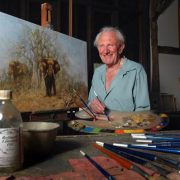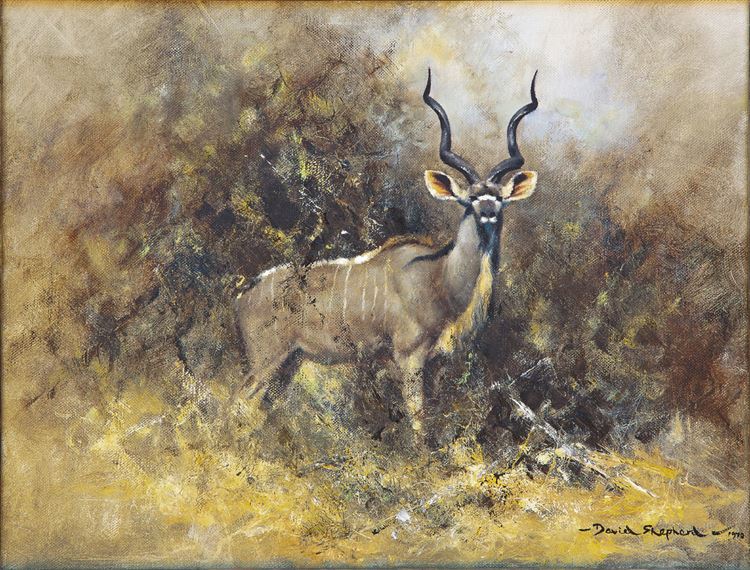1931 – 2017
Richard David Shepherd CBE FRSA (born 25 April 1931) was a British artist and one of the world’s most outspoken conservationists. He is most famous for his paintings of wildlife, although he also often painted steam railways, aircraft and landscapes. His work has been extremely popular since the 1960s in limited edition print reproduction and poster form, as well as other media such as Wedgwood limited edition plates. He wrote five books about his art. David Shepherd was born in Hendon, London, England. As a child he lived in Totteridge, North London, and he won a childrens’ painting competition in a magazine called Nursery World when he was eight years old. He then attended Stowe School in Buckinghamshire. Upon leaving school he traveled to Kenya with the hope of becoming a game warden, but was rejected. He returned to the UK but was rejected by the Slade School of Fine Art in London. However, he was taken in by the artist Robin Goodwin who trained him for three years. Neal Brown said in Frieze magazine: “David Shepherd is one of the most financially rewarded painters in the UK, but his critical status is less than negligible. Although considered the supreme master of Bad Art, Shepherd has brought pleasure to millions, as seen on the many table mats, posters and commemorative plates that bear his work.” David Gower said, “There is a sense of the atmosphere of the African bush that emanates from all his work.” He became interested in conservation during an early expedition into the African bush, where he discovered a poisoned water hole with a large number of dead zebra. He was a an outspoken world-known campaigner, and devoted much of his time to this. He was also a steam railway enthusiast, but said in a letter to the UK Railway Magazine, “you can always build another steam loco but you can’t build another tiger.” One of his best known paintings is called Tiger in The Sun, painted in 1977. He is also known for his paintings of elephants. He is the founder of the David Shepherd Wildlife Foundation. He received an Order of the British Empire, dated 31 December 1979 “for services to the conservation of wildlife.” He was appointed Commander of the Order of the British Empire (CBE) in the 2008 Birthday Honours for services to charity and wildlife conservation.




